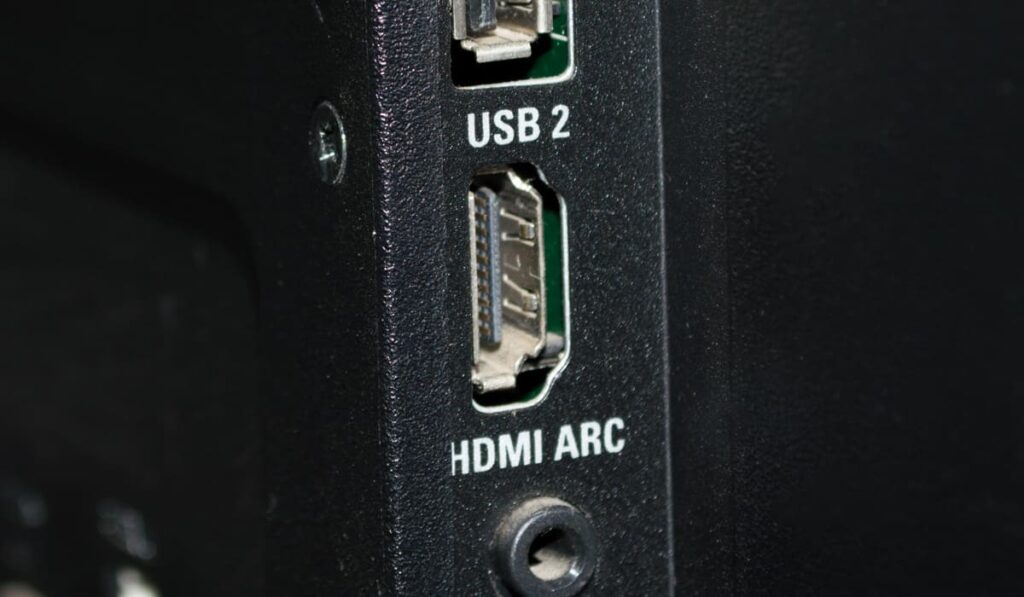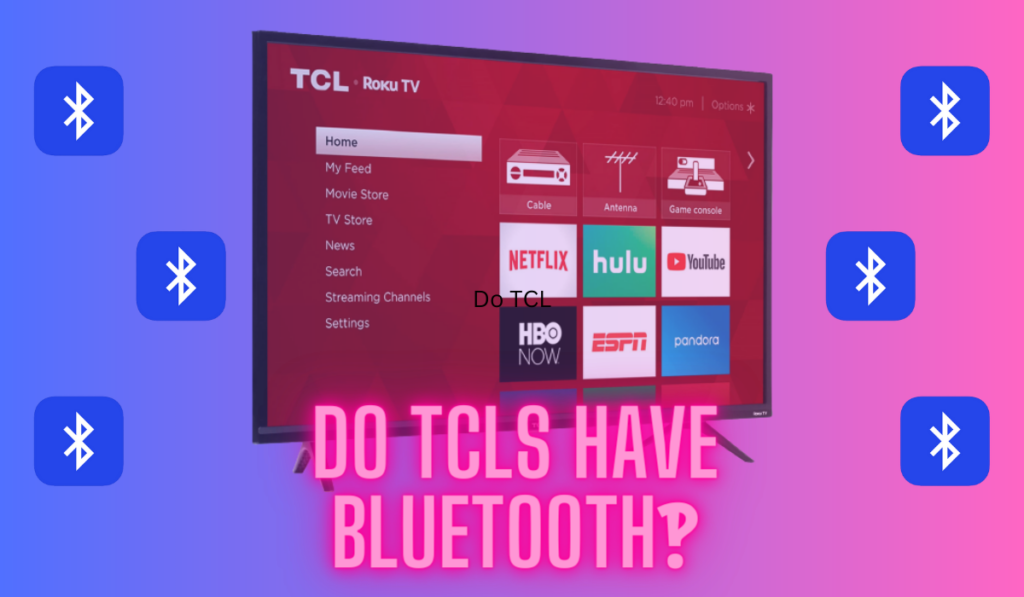Are you planning to mount your TV on the ceiling? Well, it's undoubtedly a great decision, but the installation shouldn't be taken lightly. This is a delicate operation that requires some care and attention. So, how do you properly mount a TV on the ceiling?
Once you have a ceiling mount that matches the TV's dimensions, check the ceiling for a stud you can drill into. Once you are confident you located a safe and secure location to mount the TV, secure the first side of the mount into the ceiling. Once it is safely attached, add the TV to the mount!
Sound easy? Before you jump to the installation process, don't forget to consider the ceiling design, placement, TV size, and other factors to get the ideal ceiling mount for your specific needs. Let's take a closer look at the installation process and other things that come into play to perfect the ceiling mount.
Can You Mount a TV to the Ceiling?

Yes, and you may not have realized it, but you've probably seen this done before. Ceiling mounts are standard in gyms, restaurants, and other public businesses. Now it's time to try it at home.
Benefits of Mounting a TV on the Ceiling
One of the greatest benefits of mounting a TV on the ceiling is that it is entirely out of the way; it won't take up any space on your floor or walls. This is most ideal for entertainment spaces either indoors or outside under a covered deck.
You also don't risk the TV being knocked over, damaged, or obstructed.
Furthermore, the ceiling mount for the TV looks stylish and modern. And you can install your TV in the middle of the room if that's where your couch is located—no need for a wall nearby.
How Do You Mount a TV to the Ceiling?
Before you go ahead and order your ceiling mount, verify that it's compatible with your unit. If you already have the necessary tools to complete the installation, you can jump right into the installation process. If not, you might need to make some extra purchases to mount your TV to the ceiling.
Here is a step-by-step guide for how to proceed.
Check the Supplies and Tools
Some of the supplies you need will come with your mount. However, you will need a few tools to get the job done with perfection:
- A ceiling mount (on Amazon) that is compatible with your TV’s size and make. You can check the details of the product online before placing your order.
- A good drill (on Amazon), along with suitable drill bits. In this case, you might like to go with a cordless drill. After all, you will be working very far from the socket, mostly up on a ladder. Cables can only mess things up.
- Screws and Washers. These are normally included in your mount package.
- A screwdriver (on Amazon) to fasten the screws securely.
- A ladder (on Amazon) to reach the ceiling. You can find collapsible and lightweight ladders online that won’t take up too much space for storage.
- A socket wrench (on Amazon) to tighten the fasteners and secure the installation
- A stud finder (on Amazon) to help you find the most secure and perfect placement for the mount.
Connect the Bracket to Your TV
To attach the bracket to the back of your TV, align the mounting slots on both the TV and the bracket. Once perfectly positioned, tighten the screws with the help of washers and the screwdriver.
The placement of these slots will differ depending on the brand of TV. Usually, these slots are arranged in a set pattern to match the bracket slots.
Only use the screws and washers that came with the mount. The package will provide different types of fasteners for the bracket that connects to the TV and the one that attaches to the ceiling. Hence, carefully read the manual to use the correct screws during the whole process.
Before concluding this step, make sure that the bracket is firm and secure at the back of the TV unit. If you find it uneven or loose, tighten it further. At the same time, ensure that the screws aren’t too tight since that could damage the TV.
Attach Any Excess Brackets
If you choose a simple mount, there won’t be extra brackets to attach other than the one that connects to your TV’s back. However, for some mount designs, there are extra lightweight metal poles that attach to the top and bottom of the center bracket.
These help in extending the support for TVs that are heavier or bigger. Plus, if you pick a full-motion mount, there will be more parts you need to attach to the TV’s back bracket, including one that looks like an arm and will help move your TV screen to different angles.
After completing the assembly on the back of the TV, make sure that all the attachments are secure and firm.
Check for Studs in the Ceiling
Studs help carry the weight of the TV and support your mount. Missing the studs when mounting the TV on the ceiling would be very insecure. Your TV could come loose at any time.
Place the ladder right below the ceiling where you wish to mount the TV to find the stud. Screen the ceiling with a stud finder to locate studs. Mark the stud position with a pencil.
Just remember, safety always comes first. So, mind your steps while climbing the ladder. If it feels shaky, ask someone to hold the ladder for you.
Mount Your Ceiling Bracket
Align the bracket for the ceiling with the stud position. Use a pencil to outline the bracket and the holes. Make sure that the holes fall right under the stud you located.
Keep the bracket aside and drill holes for screws to fasten the ceiling mounting plate. Depending on bolt or screw, whatever comes with your mount, choose between a socket wrench and a screwdriver.
After the drilling is complete, place the mounting plate on the ceiling and fasten the screws, one by one. If you have a wooden ceiling, tightening bolts can become complex. In such a case, drill a shallow pilot hole prior to fastening the bolts.
With a firm mounting plate, you can now jump to add the pole that descends down the ceiling. This will hold your TV in place. Use the right fastener to avoid any problems later.
Just note the mounts differ in design, and the bracket parts will vary accordingly. So, you might have to adjust your installation process a little bit. If there's any confusion, you can always refer to the mount’s instruction manual.
Mount Your TV
This is the final step, and you might need someone to help you get the job done. You might want someone to hold the TV in place while you fasten your unit to the ceiling bracket.
Before letting go of your TV, make sure to check the firmness of the assembly once more.
You can also choose to drill a hole in your ceiling for the TV’s power cable that goes to the wall socket. This way, the wires will be out of sight.
You can also leave the wires out but use the adhesive hooks to patch them closer to the walls and the ceiling. This will give you a tidier look.
How to Choose a TV Ceiling Mount

Ceiling mounts are available in a range of different designs. There are a few things to look for in order to pick the right one for you and your home.
Mount Type
Typically, there are three different kinds of ceiling mounts.
The simplest one among the three is the flip-down mount. As the name suggests, you can switch the mount position from open to close and vice-versa. Hence, when not in use, you can simply choose to hold the TV in the horizontal position, out of sight.
Next is the drop-down mount. The TV hangs down the ceiling on a pole. These mounts are adjustable so that you can tilt the angle of the screen from zero to a maximum of 25 degrees. Plus, these mounts rotate 360 degrees. They have leveling adjusters too.
The last one is the full-motion mount. These are very similar to the drop-down mounts and feature the same functions. In addition, these let users adjust the angle of the pole at the ceiling plate, too, thereby offering a full-motion mount. This option is best suited for angled ceilings.
Ceiling Design
You must consider the ceiling design before getting a mount that attaches to it.
For instance, if the ceilings are too high, getting a drop-down mount that allows for varying length ranges would be ideal. This way, you can lower your unit to the desired height.
On the contrary, you must get a full-motion mount for an angled ceiling, and if space is limited, a motorized mount will do the job just fine.
Your TV’s Weight and Size
For the best viewing experience, you must install your TV in the right position, and the height and position need to change according to the size of the TV.
Typically, a TV display filling around 30 degrees of the field of vision will be good to go. That said, a 43-inch TV should be placed at a distance of 5 to 6.5 feet. However, a TV with a 60-inch screen would need a minimum separation of 8 feet from the sitting arrangement.
In addition, you must check the weight capacity of your ceiling before installation.
Best Ceiling TV Mounts
Now that you've made up your mind to mount your TV to the ceiling, here are a few specific product recommendations you might like to consider.
WALI TV Ceiling Mount Adjustable Bracket
Suitable for TVs with screen sizes ranging between 23 and 43 inches, the WALI TV mount (on Amazon) is a sturdy choice. It can hold weights up to 110 pounds. Plus, it features adjustable height settings.
With a titling feature at the top of the descending pole, the bracket goes well with flat as well as angled ceilings.
VideoSecu Ceiling TV Mount
This adjustable ceiling mount offers a height range between 19.4 to 34.7 inches with 2 inches increments. Therefore, it offers great flexibility to the users in choosing a suitable height for the best viewing experience.
You can also enjoy a broader range of rotation when mounting your TV to VideoSecu (on Amazon). Plus, it’s suitable for angled ceilings with its adjustable ceiling plate. It can even be used to place your TV outside.
Adjustable Ceiling Bracket by Mvpmounts
Featuring a robust steel design, this adjustable ceiling mount (on Amazon) comes with wider choices for hole patterns. It, therefore, goes perfectly with many TV makes and designs. Plus, it can hold weights up to 66 pounds.
This mount also offers omnidirectional angle adjustment. That means you can move the swivel to 360 degrees. And its wider-angle tilting feature allows a range between 5 and 20 degrees.
On top of all that, it comes with a simple construction that makes height adjustments a breeze. The mount supports a height range from 21 to 35 inches.





